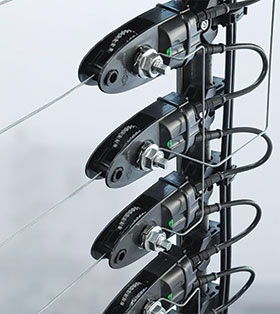

Perimeter security on mines is a tough job. The distances to cover are enormous and managing perimeter security breaches is an even bigger headache as operators need to know where the problem is, verify that it is worth taking action and then dispatching someone to the location.
As more drones come into service in the security market, these devices will provide a simpler and mostly autonomous solution in comparison to dispatching a response vehicle, but the requirement of knowing the location and verifying the threat remains.
Gallagher has a long history in the security industry and the company’s Robert Solomon explains that for long perimeters, effective integration is imperative. He provides the example of integrating surveillance cameras, including thermal cameras covering a perimeter into Gallagher’s Command Centre to provide a central security management platform.
This integration puts all the security technology in the field in front of the operator in an easy-to-use management platform. Command Centre allows for bidirectional communications to not only bring in feeds from different security products, but also share information with other platforms.
Looking at traditional perimeter solutions, such as an electric fence, Solomon adds that Gallagher has a range of solutions on the market, even for long perimeters. For example, it can support a distance of 200 km with its largest energiser, which would make for a significant fence, although securing it would still be a challenge. Other solutions break perimeters up into more manageable zones to make it easier for security operators to specify where an intrusion occurred.
Solomon notes that while exceptionally long perimeters will be problematic to secure cost effectively, mines tend to consolidate their valuable operations, plants and storage facilities in certain areas, which are naturally easier to secure with a variety of solutions.
For securing a fence along the perimeter, the company offers tension and disturbance sensors which are very accurate in alerting operators when a real incident is occurring.
The disturbance sensors intelligently detect vibration or movement of the fence structure. Solomon says that calibrating the sensors properly will all but remove the potential for false alarms. Alerts are then generated when a disturbance meets predefined criteria for each installation and environment. Once again, integrating surveillance into Command Centre will allow for verification of alarms with pre- and post-alert video.
Similarly, Gallagher also produces tension sensors. This technology constantly measures the tension of the fence and will raise an alarm if the fence or specific wires are deflected or cut (thereby changing the tension). While the tension sensors are self-aligning, setting the tension calibration initially and ensuring it remains within specific limits is important to ensure the reliability of the system. Examples of these solutions in operation can be viewed at the following YouTube links:
© Technews Publishing (Pty) Ltd. | All Rights Reserved.